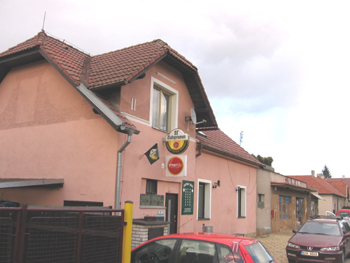Heineken buying their way into the Czech beer market
While everybody has been talking about a possible sale of Budweiser-Budvar, Heineken announced in March that they are buying Drinks Union, a Czech brewing group based in the northern Bohemian city of Usti nad Labem.
The acquisition pushes Heineken’s share of the Czech market up to 12 percent (1.9 million hl), thus cementing its hold on the number three rank behind market leader SABMiller (Pilsner Urquell) and InBev (Staropramen), writes Lyle Frink from Prague.
A purchase price has not been disclosed.
Heineken seems keen on getting a larger piece of the Czech market. The Dutch brewer stepped up its acquisition activities in 2007, buying Krusovice Brewery from Germany’s Radeberger Group. This pushed its cumulative market share to 8 percent, up from the previous 3 percentage points. Now with Drinks Union added to the fold, Heineken’s market share will increase to around 12 percent.
Drinks Union is a group of four breweries in northern and eastern Bohemia that came onto the national radar screen over the past five years with its Zlatopramen lager. Drinks Union’s flagship Zlatopramen is an eleven degree Plato lager that is marketed and distributed nationally under the “a degree better” moniker. This has been a relative hit with consumers unwilling to make the price jump to a 12 degree lager and helped revive the traditional practice of referring to beers according to their Plato rating.
The four breweries – Zlatopramen, Breznak, Louny, and Dacicky – brew a full portfolio of regional brands and the traditional Czech assortment of pils type beers. Drinks Union local production was around 900,000 hl last year including exports, says Heineken in a press release. With two breweries in Usti nad Labem, one in Louny and one in Kutna Hora, the group’s on-premise sales are very much “around the chimney”.
Further away from the chimneys, Drinks Union is a major Czech beer exporter, fighting with Budvar and Staropramen for the top two slot (behind SABMiller). Its major export market is Germany with additional exports travelling to Vietnam and other destinations. The brewer has also started licensed production of some brands in Russia. Not included in the acquisition is Granette, the drinks division of Drinks Union.
Nico Nusmeier, regional president for Heineken’s Central and Eastern Europe unit gave the official line on the purchase: “We have significantly extended our reach and consolidated our position in a profitable beer market. Our geographic presence, coupled with our strong, balanced portfolio of regional and national brands, will allow us to extract greater value from the considerable growth opportunities in the Czech market.”
To decode this statement, take a look at three key phrases: “geographic presence”, “extract greater value”, “growth opportunities”.
From a geographic perspective, Drinks Union’s on-premise business is centred around its four brewery locations. This makes it a direct compliment to Krusovice and Starobrno, Heineken’s other holdings in the Czech Republic which are strongest to the northwest of Prague and in the Moravia region around the city of Brno. Following the takeover, Heineken will have a substantial on-premise presence in Moravia as well as in central and northern Bohemia.
To extract greater value, Heineken is likely to combine management and back office support across the country. Six months after acquiring Krusovice, Heineken had a merged management structure in place pushing up the top performers from both breweries.
At the moment nobody is talking about closures, but Drinks Union has built its position by efficiently running older, low-tech breweries. Before it acquired Kutna Hora, for example, the brewery was in trouble with the city for not paying its water bill.
And then the growth question. The Czech market is a zero sum game with per capita consumption stable at a 158 litres. Any growth will come from someone else – or exports. Drinks Union has done well on two counts: using an outdated degree Plato moniker as an advertising slogan and growing exports to Germany. In the on-premise sector, however, it is considered to be a nimble player, perhaps more so than state-owned Budvar.
After each acquisition, the question is: what will happen next? The transaction will put more pressure on the diminishing field of small and regional brewers. The combined Heineken market share will be nearly double the size of state-owned Budweiser-Budvar, making the Ceske Budejovice brewer even more of an export-only phenomena. Mapping the country by on-premise sales would leave three primary gaps for Heineken in the Czech Republic: Plzen (dominated by SABMiller), Prague (divided between SABMiller and InBev) and eastern and northern Moravia (InBev and the PMS Prerov group). Potential result – look for something to happen with PMS Prerov, a collection of the Holba, Litovel, and Zubr breweries.
Top brewers’ market share (%) 2007
| SABMiller | 44.8 |
| InBev | 16.1 |
| Budweiser-Budvar | 6.3 |
| Drinks Union | 4.5 |
The Czech market is dominated by SABMiller with around half of the total market. According to industry production tables, SABMiller has a 44.8 market share with its Gambrinus, Kozel, Radegast, and Pilsner Urquell brands. Actual market share is closer to 50 percent when you calculate that its budget Klasik brew is made by another brewer. A quarter of all local beer sales in the Czech Republic are the Gambrinus label. At 16.1 percent, InBev has the number two slot with its Staropramen brewery. Below the top three, the market thins out considerably with Budweiser-Budvar, and small regional breweries.
The Czech beer market is one of Europe’s reference beer markets and profitable- at least for the bigger players. Annual consumption is currently estimated at 16 million hl beer. In 2006, Czech per capita consumption was 158.1 litres per year, the highest in the world.


